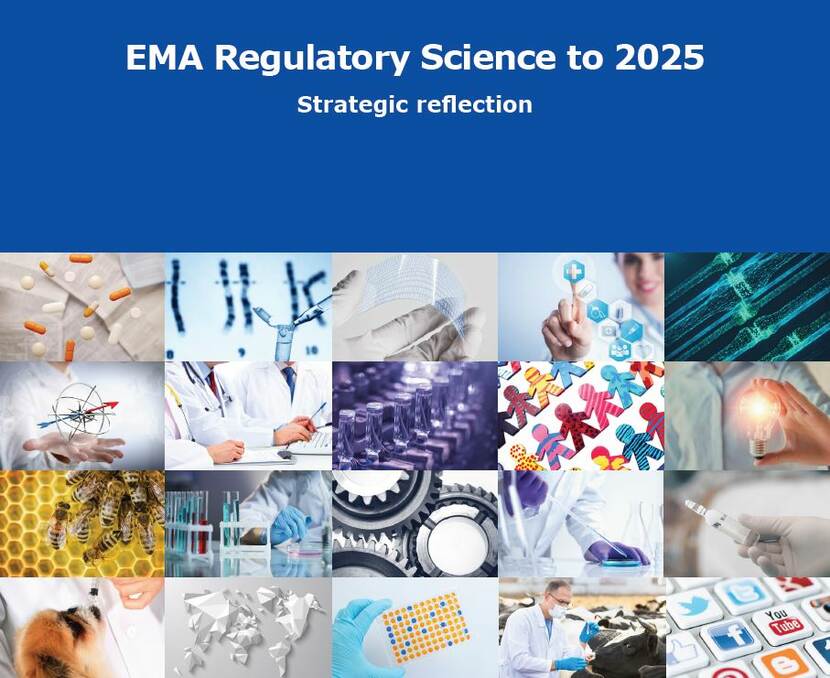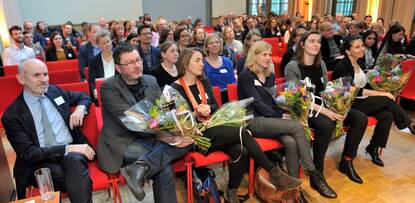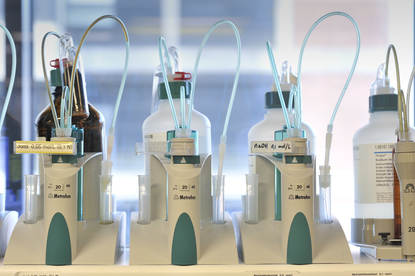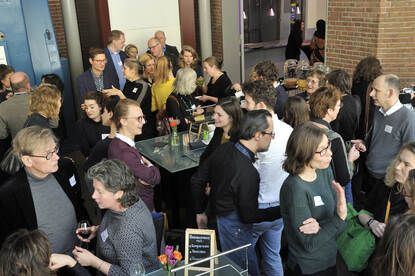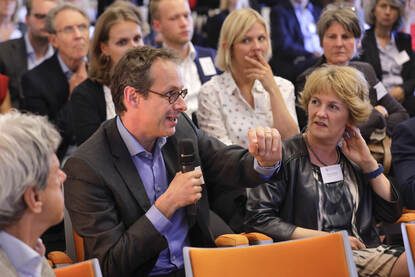Tony Humphreys (EMA): 'Regulatory Science to 2025' helps to future-proof EU regulatory system
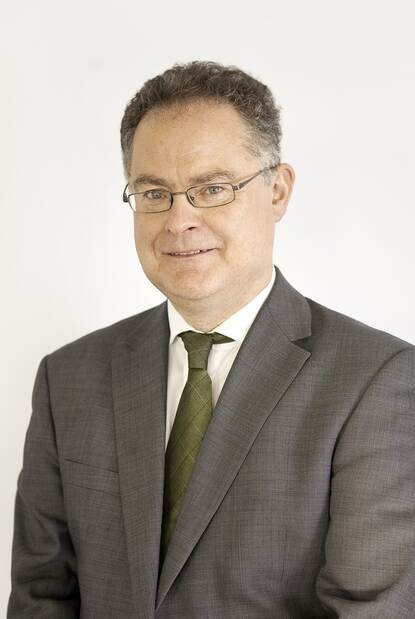
Last year the European Medicines Agency (EMA) published its draft strategy 'Regulatory Science to 2025' for a six-month public consultation. “We want to really try to future-proof our regulatory system so that it can be a facilitator system to reach patients and healthcare professionals. That’s the main message of this strategy,” says Tony Humphreys, Head of Scientific Committees Regulatory Science Strategy at the EMA.
“It’s the first time that the EMA has actually invested in pulling together a reflection on this very broad topic. There is an awareness that an immense change is taking place in science and technology development. About 20 years ago the majority of molecules were classical chemical compounds, produced by organic chemistry. Since then, however, there has been a huge shift in complex products, such as biological products and synthetic DNA. These are more complex products which can be associated with more precise types of intervention by moving away from symptomatic treatment to disease modification. We are very much aware that science and technology is really moving rapidly and it’s a challenge for all regulators to make sure that they are future-proofed to deal with that,’’ says Humphreys.
Humphreys thinks it is a good thing to have a public consultation. “Knowing that these strategic decisions would have a very long-term impact with even a 5 to 10 year perspective, it is good to hear the real voice of the stakeholder groups because they are very diverse, ranging from patients to healthcare professionals, academia, big industry, small industry and investors. It’s very good to hear their views. Are the actions we are considering going to make a meaningful difference or have a real impact in the right area? Because that is the challenge, it’s very easy to identify areas in which we could do something, or do more, but the real issue will be 5-10 years down the road when we have to ask ourselves what the real change or real impact was and whether we made things better? To succeed it’s important what steps we are taking and how well they impact.” He also explains why the EMA published the public consultation before Christmas 2018. “It was very important for us to get it out there as now we are relocating to the Netherlands.” We therefore expect to be able to pick up the story again from July this year.
Public consultation to get EU view on innovation in science and technology
In a reply form the EMA is asking people about their impression of the strategy and to select their top 3 recommendations on how to make changes in the system. “We are asking them to prioritize from their stakeholder’s perspective. And we are also asking them to assess the underlined initiatives that we are proposing. Are these the right ones to pursue, or can they identify any others which would deliver change more effectively? We are also asking them if there are any obvious missing areas or areas we have forgotten about. Because, if there are, we would very much like them to be pointed out to us now. After analysing the data we will probably arrange more workshops in Amsterdam in the fourth quarter of this year, just to sort of close out the exercise. Hopefully, we can than say that we have validated this exercise not just by talking to in-house experts, but also to our stakeholders and that they have had a chance to really express where they think the direction of travel should be.”
“We need a replacement for the network strategy to 2020 to guide us through to 2025 and beyond. And a key component in that, in the European network system, is how we view innovation in science, technology and how this applies to crossover in all of our activities, as well as how we are preparing as a European system to engage with that. It is a global perspective because, at the end of the day, the Americans have a view, as have the Japanese, Singapore and Koreans etc. So there is a global dimension to this as well, which we should not forget about. Europe should have its own view on how to move this agenda along, at least with regard to the European system.
“We didn’t just pull this out of the air. We already contacted key stakeholders such as the patient’s groups and academia and we asked them to express their views. We also launched workshops and pretty much everybody could see that perspective in what we are putting on the table. So, to some extent we had already gained a lot of positive experience during this exercise. To be very honest I was expecting comments like ‘shouldn’t you guys be focusing on Brexit or the relocation to the Netherlands and just keep the core business going? And what are you doing dreaming about 5-10 years down the road?’ But the problem is that the world doesn’t stop turning because we have a little bit of local difficulty in Europe. We have got to plan. We believe that life sciences in Europe is very healthy and that the pharmaceutical industry is very healthy. It’s one of our major success stories in the European system on a global basis and we need to try to foster and sustain that.”

Future-proof the regulatory system
To Humphreys the main message of the Strategy is to try to future-proof the regulatory system in such a way that it’s a facilitator system to reach patients and healthcare professionals. “We feel obliged to guide the development program so that resources are not wasted and to avoid any missed opportunities for patients. Our real challenge is to give patients in Europe access to new medicines. The sad fact of the matter is that the situation is different in every Member State and not every citizen or patient can get access to the same medicine, even when they are approved. We need to try to understand why that is and try to produce the evidence that shows the value of these products so that more people can get access to them.”
The Strategy to 2025 does not essentially deviate from the current efforts in regulatory science, according to Humphreys. “The significant new thing is that we put it all together in a single document for the first time in the history of the system. We have to realise that any investments we have made in this innovation or any new innovation being added to the system is competing with the resources used for the day-to-day business and the core business, as well as with the supply and availability concerns.
We want to allow ourselves a period of time to reflect on innovation and ask how we can specifically make Europe a more attractive place to foster innovation. It’s a good mindset to have, otherwise you can end up focussing on your day–to-day priorities and your survival priorities. In such a situation you will never think about moving on to a different level and that is the moment you may start encountering difficulties.”
As an example, he highlights the digital revolution in terms of artificial intelligence and cognitive machine learning. “People might ask why a regulator is worried about that, because it’s so far removed from what you have to do in your day job. But from our consultations we know that the industry is adapting these technologies in a massive way and that there is a very important business reason for doing so because people are expensive and computers aren’t. It’s happening in other sectors faster than in the pharmaceutical industry. If you don’t respond adequately, the innovation will go elsewhere. Ultimately you will be blocking innovation because if you don’t understand how the data bits are generated and if our response is too conservative, this may make Europe a less attractive place for these things to happen.”
Realistic strategy
As far as Humphreys is concerned it’s a realistic strategy. “But it takes two to tango. If some of the other stakeholders don’t want to share the ambition, it might be a problem. One of those ambitions is to work with the health technology assessors to really try to crack the access challenge. We have a good record of collaborating with them over the years, but that has to continue. It’s good that these specialists signed up. Although we don’t have the power to oblige some of them to sign up to anything we would like to do with them, it’s an invitation that we hope they take up. If they don’t like what we think is a good idea, then they really should tell us.
What we are saying is, while accepting the regulation landscape that we have today, how can we collaborate to make it an environment that fosters innovation, or at least helps the developers? And, particularly on a small scale, help the developers to navigate their way through what is a complex landscape. That’s also the key message as well. There’s no doubt that big pharma is also interested in this discussion. But the regulatory system can appear overwhelming to some young people in a university with a spin-off company, and suddenly they get hit with the global regulation system. Is there any way we can help these academic groups and small enterprises navigate their way through that complexity as a joined-up system? Can we validate those connections in the spirit of good will and collaboration?”
Russian dolls
“The goals themselves are very high level. Each one of those core recommendations is like a Russian doll. If you unpack it, you get a handful of underlying actions that we think could be ways of moving those recommendations forward. The public consultation is an opportunity for the stakeholders to influence what that looks like. They can identify additional ones, they can strengthen, they can say what is really important to invest in, etc. We want the Strategy to 2025 to enable the network to say that we know we have to invest in regulatory science. As a collective network system we can then say how many resources we can afford to invest in the next five years, even on a topic like the big data area.
We don’t have a list of pre-identified research priorities in the EU system. But we do have a responsibility to somehow take over the products from some of these research projects and translate them into the reality of the regulatory environment. If we invest in regulatory science, the regulatory system should be set up to translate that in order to improve the environment for the developer or innovator. The challenge is how do you adapt the system in a time efficient manner so that we can foster opportunities and not become an obstacle ourselves. There are challenges or opportunities in terms of the science itself, like the conversion of the technologies and diagnostics in medicine, or the digitalising and understanding of personal DNA type profiling. It’s incredible, something that wasn’t possible 10 years ago is now a reality. So that is going to fundamentally change our understanding of patient populations. The thing is that it is happening, so all we have to do is engage.”
Confidence building
“A major trend is that we have to react to the whole design of our paradigm of a basic clinical trial structure, the public awareness of the data that we generate and the surrounding transparency discussion. No longer can we say ‘trust the regulator, we approved it and that’s all you need to know’. We really have to justify and explain our approval to many people. It’s about confidence building. The whole transparency of our operation is that we have to explain to people. And we should be happy about that because it’s a far better situation than the ‘trust us, we are the regulator’ mentality that we had in the past. And yet, we are still facing massive health threats. We still have to prepare for the next epidemic, because it’s always lurking on the horizon. We still have a major anti-microbial resistance problem. And, in Europe, diabetes, cancer and heart disease are going to kill a majority of the population.
All the other regulators in the world are facing the same issues. There is no point in reinventing the wheel. If there is a project or initiative in the United States that is really interesting, let’s not be shy, but say, ‘Wow that’s a really good idea. We should adapt that to Europe’. The Americans had a regulatory science reflection almost 10 years ago in order to modernize their system. The fact that we are doing that now in Europe is okay, with one of the stimulants was certainly the Brexit. It has refocused the minds of the heads of the agencies and resources in the system and how they are distributed. The fact is that coping with the absence of our UK colleagues will be quite a challenge. But it’s also an opportunity to do things differently. The great thing about Europe and our network system is our ability to mobilise the expertise from all over on almost any topic. And essentially we just have to set the agenda and say we want to have a discussion on the topic of mobilising the best scientists. When you do something like this, you often end up with a very useful product.”
To Humphreys the power is in Europe itself: “Regulatory science is absolutely at the core of our business. If we don’t have regulatory science at the core of our business, how can we provide valid scientific advice on company development products? How can we produce valid guidelines? We have to engage with the technical developments, otherwise we may be accused of ivory towerism.”
The input of NCAs is important
The NCAs have an extremely important role in terms of the public consultation on the Strategy, according to Humphreys. “The NCAs are absolutely at the heart of this exercise. You can’t disentangle the NCA from the network system, because they are the body of us. They provide the members of the scientific committees and working parties. If you take them away, there isn’t an Agency and there is no scientific opinion-generating machine. I really think the network has an important part to play in that discussion. We truly want to help small and medium-sized enterprises and one of the initiatives that we jointly started is the new innovation network, which has only been around for a couple of years. The ambition is to reach out at local level, in the local language, for those developers that actually want to take the first steps in developing pharmaceutical products. And we sincerely believe that this would be a very useful starting point.
The responsibilities in Europe are divided on the basis of the purpose of the regulations with a balance between centralized and decentralized functions. But the whole idea is that there should be coherence, that we are facilitating a pathway. Also, in product development we should actually say it’s our responsibility to collaborate and facilitate innovators. I really think that this is already the essence. And based on that sentiment we have to engage in a network strategy because we must collectively agree to go further.”
"I think that life sciences and the pharmaceutical industry in Europe is very healthy. It's one of our major success stories in the European system on a global basis and we need to try to foster and sustain that. It’s a very coherent strategy that the Dutch seem to have at a national level and in the level of integration of life sciences and innovation environment around the various cities and universities and hospitals. I would be quite happy to say one of the European Union’s key centres of excellence is certainly in the Netherlands. We must nurture that and, if anything, strengthen it in the years to come, because we have to realise that, at the end of the day, innovation is an area in which there is global competition."
